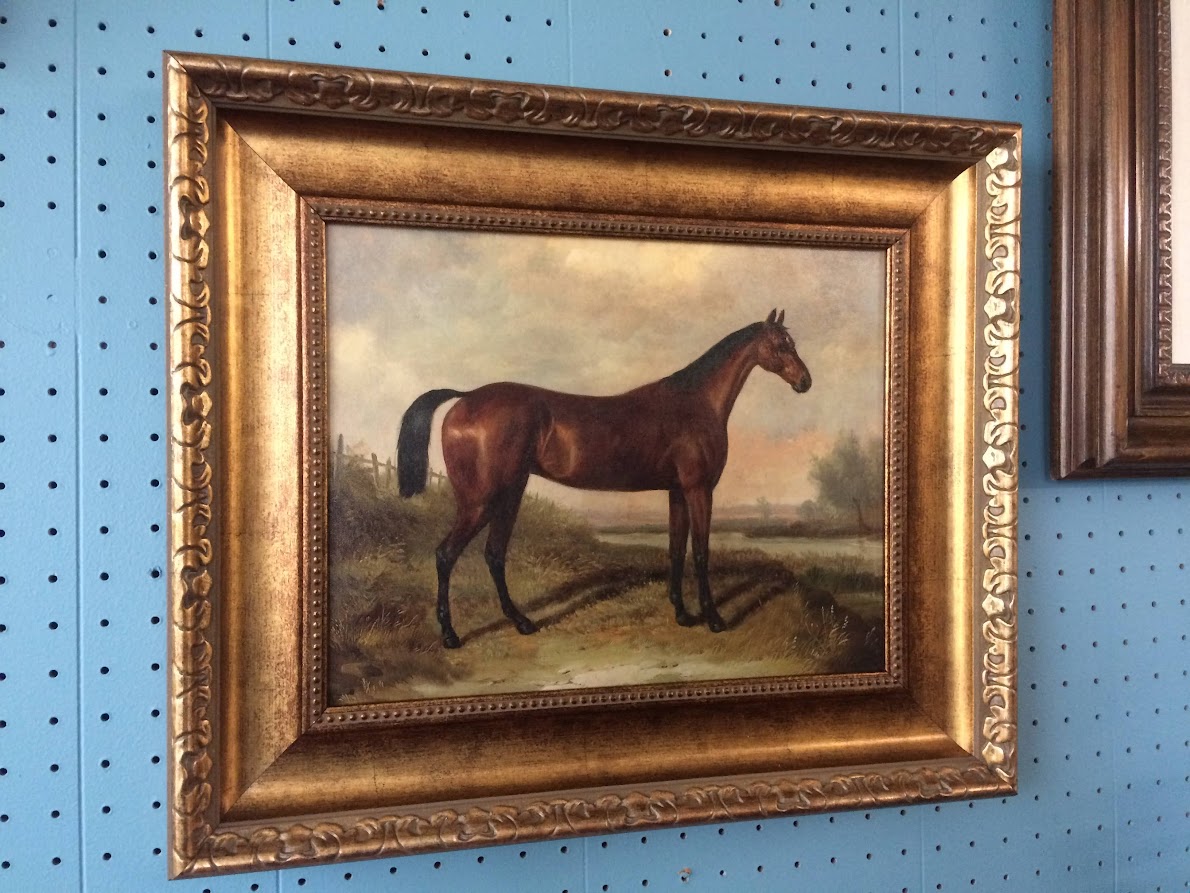
Nice reproduction horse portrait in deep gilded frame. This nice replica of an antique horse portrait has a beautiful Old World look!
Reproduction Horse Portrait
Of course, horse portraits were popular amongst the wealthy in the 18th and 19th centuries. This nice replica shows a beautiful, strong specimen.
The gilded frame and reproduction print on canvas show nicely.
A reproduction horse portrait, especially when presented in a gilded frame, can be a stunning decorative piece and may hold value among collectors and enthusiasts of equestrian art. Here are some factors to consider when evaluating the worth of such a piece:
Subject Matter: The subject matter of the portrait, featuring a horse, can significantly influence its appeal and value. Portraits of notable horses, well-executed equine representations, or depictions of famous equestrian scenes may be more sought after by collectors.
Quality of Reproduction: Assess the quality of the reproduction portrait. High-quality reproductions with accurate color reproduction and fine detail are generally more desirable and valuable. Look for portraits with vibrant colors and lifelike details that capture the essence of the horse.
Size and Format: The size and format of the portrait can affect its value. Larger portraits or those framed in elaborate gilded frames may be more desirable to collectors.
Condition: The condition of both the portrait and the frame is crucial in determining their value. Look for any signs of damage, such as tears, creases, or discoloration in the portrait, as well as damage or wear to the frame. Portraits in excellent condition, with well-maintained frames, will typically command higher prices.
Framing: A gilded frame can add elegance and sophistication to the portrait. Consider the quality and craftsmanship of the frame, as well as its condition and any decorative elements it may feature.
Artist or Publisher: Determine the artist or publisher of the original artwork and the reproduction portrait. Some artists’ works or publishers’ prints are more sought after than others, which can impact the value of the portrait.
Age: Older vintage reproduction portraits may be considered more collectible, especially if they are no longer in production. However, condition and rarity are often more important factors than age alone.
Provenance: Portraits with a documented history or provenance, such as being part of a famous collection or associated with a notable previous owner, may carry higher value.
Market Demand: The current demand for reproduction horse portraits, particularly those framed in gilded frames, can influence their market value. Consider researching recent sales of similar items to gauge market trends and pricing.
To determine the value of your reproduction horse portrait framed in a gilded frame, consider consulting with art dealers, collectors, or appraisers who specialize in equestrian art or vintage portraits. They can provide insights based on the specific details, subject matter, condition, framing, and market demand for your portrait. Additionally, researching recent sales of similar portraits through auction houses or online marketplaces can help determine its market value.
